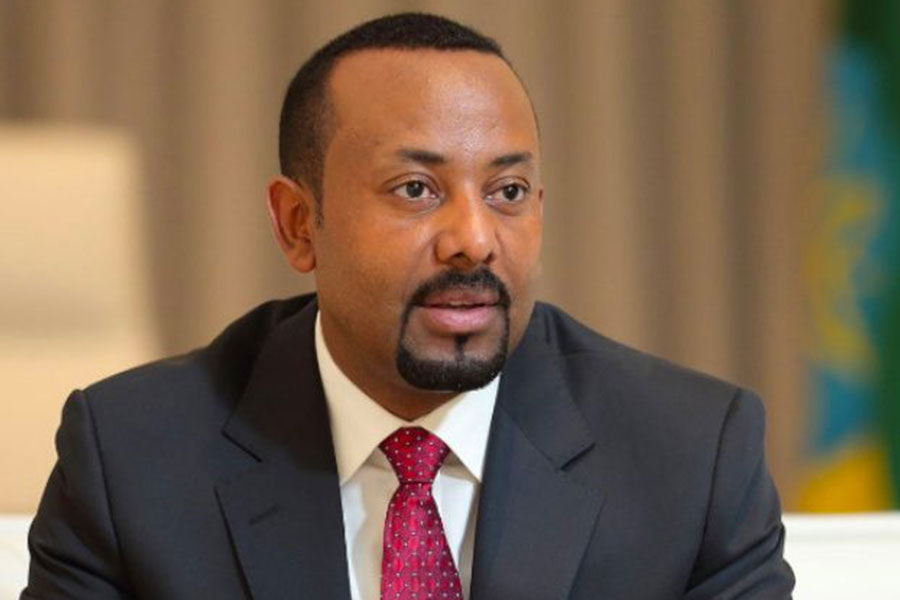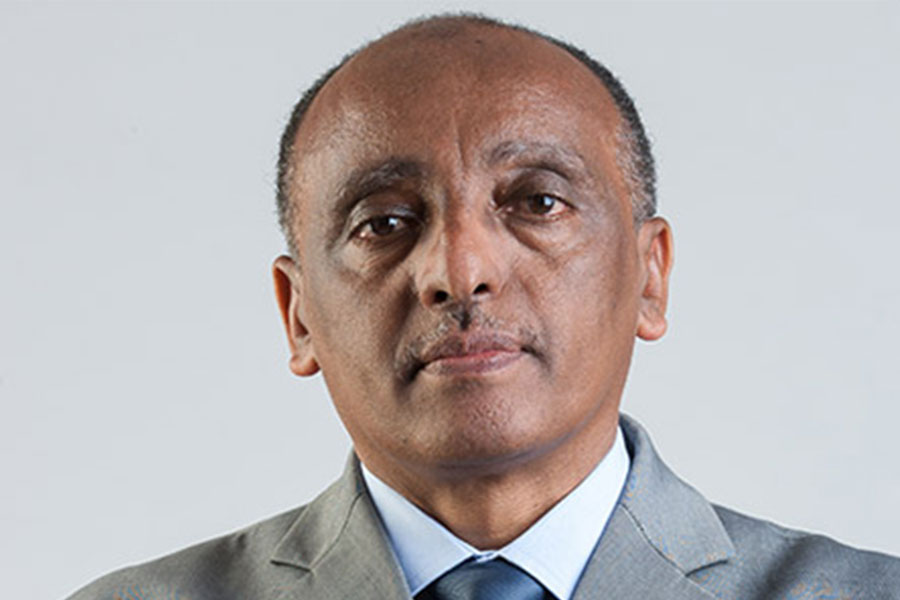
Radar | Oct 01,2022
Awash International Bank (AIB) has continued to consolidate its position as a formidable force, setting a new benchmark for its peers in the banking industry. Its performance cements Awash Bank's position at the pinnacle of the financial sector. Over the past few years, the Bank has not only maintained but significantly enhanced its growth path, defying domestic adversities.
With a tremendous increase of 30.9pc in net profits, Awash Bank’s earnings soared to an impressive 6.99 billion Br for the fiscal year 2022/23. The growth outshined competitors such as Dashen, Hibret, and Abyssina, which reported net profits of 3.56 billion Br, 2.29 billion Br, and 3.87 billion Br, respectively.
The Bank's President, Tsehaye Shiferaw, attributed this to the infusion of fresh capital, which saw its paid-up capital soar by 42.4pc to 14.65 billion Br, a figure nearly triple the regulatory minimum set by the National Bank of Ethiopia (NBE) for 2026. Such financial manoeuvring not only fortified Awash’s capital base but also seemingly reassured its shareholders about the Bank's growth potential, according to Abdulmenan Mohammed (PhD), a London-based financial analyst.
He lauded Awash's profit as "phenomenal," a sentiment echoed in the modest yet significant rise in Earnings Per Share (EPS) by seven Birr to 577 Br. The Bank directors and executives have pleased their shareholders by posting EPS of 57pc, one of the highest among the private banks but at par with the Bank of Abyssinia, while Birhan Bank reported the lowest at 15.6pc.
"Shareholders have every reason to be delighted with the Bank's performance," he said, acknowledging the strategic moves that have led to these outcomes.
The Bank’s revenue sources have been diverse, contributing to its robust bottom line. Interest income and fees, as well as commissions, played a significant role. Interest on loans, advances, central bank bonds, and other deposits surged by 54.9pc to Br 21.93 billion Br, while fees and commissions increased by 13.1pc to 5.61 billion Br, reflecting on the Bank's operational efficiency and its executives' ability to capitalise on market opportunities and diversify income streams, according to industry analysts.
Awash Bank led the pack among its peers, recording a 25.6pc increase in loan disbursement to 159.37 billion Br, more than double the previous year's average and the highest among seven of its closest competitors. However, the Bank's journey has not been devoid of challenges.
Gure Kumsa, the Board's chairman, told shareholders about several obstacles at a recent shareholders' meeting.
The key challenges the Bank confronted were global supply-side issues, a rise in food prices, domestic conflicts, and drought. He brought to their attention a brewing tax dispute with the Ministry of Revenues over retrospective profit tax claims on dividends previously used to pay up subscribed capital. The litigation with federal tax authorities poses a potential risk to the Bank's financial stability.
"Billions are being asked," Gure disclosed to shareholders.
Awash Bank has significantly reduced its provisions for loan impairments, underscoring the strength of its loan recovery efforts. The Bank's provision for impairments plummeted by 71.7pc to 242.97 million Br, a figure that notably undercut the average set by its eight peers and was lower compared to Bank of Abyssinia’s 960 million Br and Dashen Bank’s 497.6 million Br. However, it was slightly above Hibret Bank's 103 million Br set aside for provisions.
Industry observers, including Abdulmenan, have praised Awash Bank's strategic handling of non-performing loans (NPLs). The Bank's NPL ratio, which has dipped below one percent, starkly contrasted with the international standard of five percent, indicating a robust credit evaluation work and effective loan recovery efforts.
“The reduction in provision for impairment of loans and other assets is praiseworthy,” Abdulmenan told Fortune.
The financial feat is particularly commendable, given the broader challenges in the banking industry.
"This is a significant achievement," Abdulmenan said. "It demonstrated the Bank's stringent credit evaluation processes and effective loan recovery mechanisms."
Samuel Kenu, an accountant at Awash’s Gofa Branch, shared this view on the Bank's performance. While he applauded the Bank's overall financial success, he showed reservations over its lag in the digital finance landscape. He believes the Bank needs to focus more on this area to maintain its competitive edge.
“We're one of the pioneers in digital finance,” he told Fortune. "But we're lagging in promoting it."
Shareholders, such as retired businessman Nemera Weyesa, who owns 908 shares following a series of recapitalisations, have expressed mixed sentiments. While delighted with the EPS growth, Nemera raised concerns over the selection process of directors serving on the board, calling for more stringent criteria.
According to the Bank President for the past 14 years, Awash Bank is committed to leveraging every business opportunity in the industry.
Incorporated in 1994, with 486 founding shareholders raising 24.6 million Br in equity, Awash Bank has evolved significantly. Its balance sheet expansion is a reflection of its overall growth strategy. It is the most capitalised private bank, with total assets amounting to 224 billion Br, having a well-managed debt profile, with total liabilities at 196 billion Br. Its cash and bank balances increased by 8.8pc to 34.88 billion Br, while its liquid to total assets ratio dropped by 1.9pc to 15.6pc, revealing a tight liquidity margin, a delicate balance between asset growth and liquidity management.
The Bank's capital and non-distributable reserves also saw a significant increase of 29.6pc to 22.12 billion Br, and its capital adequacy ratio (CAR) improved by 1.8pc to 14.3pc.
The Bank's performance metrics, such as a return-on-equity (ROE) of 25.8pc, the highest among 15 private commercial banks, and a return-on-asset (ROA) of 2.9pc, above their average, showed its executives' efficient use of resources and competitive position in the industry, according to the industry analyst.
In the domain of foreign exchange managment, Awash Bank experienced mixed results. While its gains on foreign exchange dealings plummeted by 33.2pc to 672.94 million Br, its total foreign currency generated climbed by 17pc to 1.46 billion dollars.
“We're still the highest foreign currency earners,” Tsehay told Fortune.
Awash Bank is, however, experiencing substantial financial strain due to its ambitious expansion strategy. It has undergone a 60pc increase in wage expenses, which have soared to nine billion Birr. The rise in costs has even surpassed the expenses incurred through interest on deposits by a significant margin of three billion Birr.
In a year marked by aggressive growth, Awash Bank has seen its deposits swell to 182.17 billion Br, marking a 23.3pc increase. However, this has had a consequential impact on the Bank's loan-to-deposit ratio, indicating a shift in its liquidity dynamics.
Abdulmenan noted a peculiar trend of a surging liquidity value, which has diminished in relative terms. This, he suggested, points to the Bank operating with tight liquidity margins, raising concerns about potential liquidity challenges in the face of continued expansion.
“Its further growth will cause a liquidity problem," he told Fortune.
The rapid expansion has affected liquidity and led to a sharp 60pc increase in operating expenses, which stood at 3.65 billion Br. The Bank's executives attributed this increase to the decision to expand its branch network with 150 new locations and the addition of 4,300 staff members.
Abdulmenan has voiced a word of caution to the Bank's management. He stressed the importance of maintaining a balance between growth ambitions and effective cost management, hinting at the risks of unchecked expenditure in pursuit of expansion.
Tsehay, the president, acknowledges the challenges posed by the rising expenses, attributing them in part to the broader economic context marked by inflation. Despite these headwinds, he remained committed to the Bank's strategic vision.
"We're digging deeper to maintain our leadership," he said.
PUBLISHED ON
Dec 09,2023 [ VOL
24 , NO
1232]

Radar | Oct 01,2022

Radar | Jun 24,2023

Sunday with Eden | Jan 07,2023

Radar | Nov 16,2019

Radar | Oct 28,2023

Radar | Sep 05,2022

Fortune News | Sep 29,2024

Radar | Feb 23,2019

Radar | May 26,2021

Radar | Dec 24,2022

Dec 22 , 2024 . By TIZITA SHEWAFERAW
Charged with transforming colossal state-owned enterprises into modern and competitiv...

Aug 18 , 2024 . By AKSAH ITALO
Although predictable Yonas Zerihun's job in the ride-hailing service is not immune to...

Jul 28 , 2024 . By TIZITA SHEWAFERAW
Unhabitual, perhaps too many, Samuel Gebreyohannes, 38, used to occasionally enjoy a couple of beers at breakfast. However, he recently swit...

Jul 13 , 2024 . By AKSAH ITALO
Investors who rely on tractors, trucks, and field vehicles for commuting, transporting commodities, and f...

Jul 5 , 2025
Six years ago, Ethiopia was the darling of international liberal commentators. A year...

Jun 28 , 2025
Meseret Damtie, the assertive auditor general, has never been shy about naming names...

Jun 21 , 2025
A well-worn adage says, “Budget is not destiny, but it is direction.” Examining t...

Jun 14 , 2025
Yet again, the Horn of Africa is bracing for trouble. A region already frayed by wars...